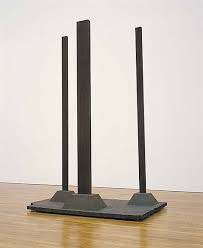Have you ever wondered why contemporary art appears to be difficult to understand although often seems trivial? Contemporary artworks have taken on odd forms that defy conventional interpretation, from a duct-taped banana to a meme of a bored monkey. Understanding the relationship between the sublime, the avant-garde, and the complicated structure of contemporary art by delving into the philosophical writings of eminent French post-structuralist thinker Jean-Francois Lyotard may enlighten us on contemporary art.
Jean-Francois Lyotard challenges the grand narrative of modernism. The grand narratives of knowledge and power have crumbled in our time due to the postmodern situation as well as the fact that they are helpless in the face of the information society.

Year. 1950–1951. https://en.wikipedia.org/wiki/Vir_Heroicus_Sublimis
The investigation of the sublime and the avant-garde by Lyotard offers fresh perspectives on these ideas. Lyotard expresses his doubt about society’s capacity to comprehend and evaluate works of art due to capitalism’s pervasive impact. The avant-garde, which is frequently connected to postmodern art, signifies a break from convention, embodying distinct ideas, styles, and methods that challenge prevailing artistic paradigms.
Central to Lyotard’s perspective is the concept of the sublime. This enigmatic quality defies precise definition and disrupts the didactic intentions of traditional texts. The ancient rhetorician-Longinus, living between the 3rd and 1st centuries BC, offered an early definition of the sublime as unforgettable, irresistible, and thought-provoking. Lyotard’s inquiry probes whether achieving the sublime requires a specific technique.
While Longinus posited that rhetoric and technique contribute to the sublime, subsequent thinkers like Boileau in the 17th century viewed it as unteachable and beyond didactic instruction. The sublime, according to Boileau, transcends rules and guidelines, demanding an audience with the conceptual breadth and sensitivity to experience its impact. It is more than adherence to conventions; it necessitates an encounter that defies easy explanation—a spark of genius or divine inspiration that resonates deeply.
Lyotard’s discourse on the sublime, challenges established norms, particularly in the world of art education. Studios, schools, and academies have traditionally emphasized techniques and skills that lead to aesthetic harmony. However, the sublime disrupts these principles, fostering an environment where art becomes an exploration of the unknown, often characterized by imperfection and shock effects.
Art’s transformation from imitation to innovation is at the core of Lyotard’s arguments. Instead of imitating nature, art creates distinct worlds that evoke the sublime. The role of the artist shifts from that of a genius to that of a facilitator of experience. The audience’s perception and emotional response to the artwork gain prominence over the creator’s intention.
Lyotard’s perspective underscores that the sublime is not about identification but about surprise. It thrives on the unexpected, often manifesting in imperfect or even unsettling creations. Art no longer mirrors pre-existing models; rather, it endeavors to unveil the unpresentable—realities that defy conventional representation. This shift blurs the lines between what society recognizes as art and what remains misunderstood and rejected.
In the realm of the sublime, the audience’s experience comes first. Lyotard’s philosophical journey aligns with the evolution of contemporary art, where the focus has shifted from “how art is made” to “how it resonates with its audience.” The sublime, as conceived by Lyotard, encompasses an immense, life-altering entity that eludes mere observation. It arouses both awe and fear, compelling the soul to navigate the tumultuous waters between life and death.
In essence, Lyotard’s exploration of the sublime and the avant-garde brings us face-to-face with the intricacies of contemporary art in the postmodern era. His ideas challenge conventional norms, urging us to rethink the purpose of art, the role of the artist, and the profound impact that art can have on our perceptions and emotions. Through Lyotard’s lens, we gain new insights into the dynamic interplay between art, society, and the ever-evolving nature of human expression.


